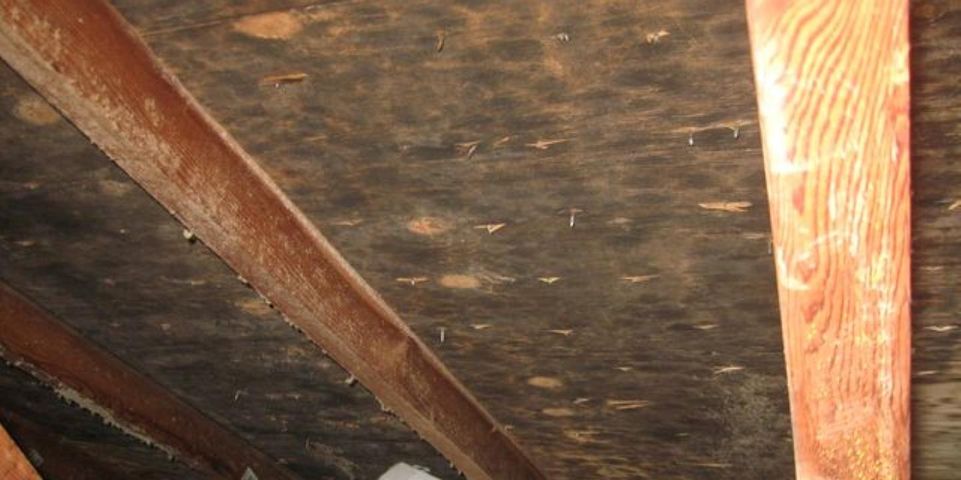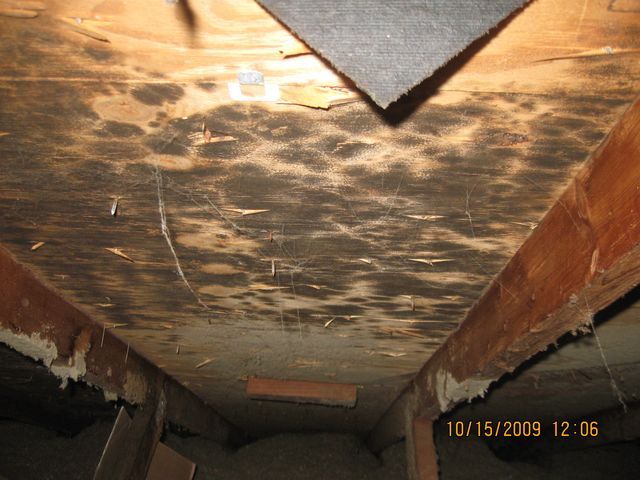Why Does Mold Grow on Attic Sheathing?

Mold and mildew growth is one of the most common causes of structural damage in a home, often spreading throughout the property before homeowners realize they have a problem. One of the most common areas to require mold removal is the attic, but what makes it more susceptible than other parts of the home? Here you’ll find a detailed guide exploring the reasons why roof sheathing in the attic is such a popular breeding ground for mold growth, as well as how to avoid it.
A Guide to Handling Attic Mold Growth
Why Roof Sheathing is a Breeding Ground for Mold?
The most common cause of mold growth in the attic is excess moisture caused by a lack of ventilation, which provides the ideal living conditions for mold spores. An attic is ventilated by intake ventilation coming from soffit vents and exhaust ventilation in the roof. When an attic is improperly ventilated, it will cause condensation on the underside of the roof sheathing in turn leading to mold growth. Most homes do have adequate amounts of vents in the soffits, however when the vents become blocked by the vents themselves being dirty or insulation in the attic blocking air flow, it leads to problems.

What Causes Excess Moisture in the Attic?
Excessive moisture in the attic can be caused by a number of issues, the primary being a condensation issue. Moisture moves through the home via stack effect. The moisture that is produced within the home rises up and into the attic. Without proper ventilation the moisture gets trapped and causes condensation. Most people think that when a roof leaks, it is the most likely cause for mold to grow within the attic. Not eliminating that thought as a possibility, however condensation issues typically occur in the winter time when the roof sheathing is cold and warm moist air rises into the attic causing the roof sheathing to become a condensing plane. Hiring a mold removal and inspection expert for the occasional assessment is one way to help catch mold before it grows out of control.
How Can I Prevent Attic Mold Growth?
To prevent mold from growing in your attic, you need to ensure it is properly ventilated. After a remediation takes place, the expert should guide you on how best to correct the ventilation problem. Most generally this is an issue with soffit ventilation, but never rule out roof ventilation as well. It is recommended to have 1 square foot of ventilation for every 150 square feet of attic space. The 1 square foot is divided equally between the soffits and the roof. An example would be: a 1500 square foot attic space would require 10 square feet of ventilation, 5 square feet in the roof and 5 square feet in the soffits.
When it comes to mold removal in the home, the faster you have a professional perform remediation services, the less likely you are to suffer serious structural damage. If you need help, A-1 Mold Testing & Remediation Services will be happy to help you troubleshoot your issues. Locally owned & operated by a born and raised Nebraskan with locations in both Lincoln and Omaha, NE, they’ve become one of the area’s leading mold inspection and removal companies, offering a range of affordable services. Call them today at (402) 474-6653 in Lincoln or (402) 964-2080 in Omaha to schedule a service appointment. You can also visit them online for a complete list of services. Trust your families health to A1 Mold Testing!
About the Business
Have a question? Ask the experts!
Send your question

